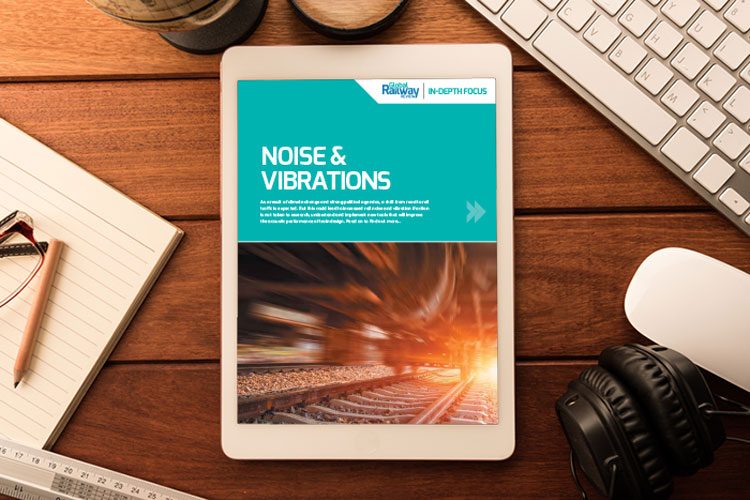Noise & Vibrations In-Depth Focus 2018
Posted: 4 December 2018 | Global Railway Review | No comments yet
As a result of climate change and strong political agendas, a shift from road to rail traffic is expected. But this could lead to increased rail noise and vibration if action is not taken to research, understand and implement new tools that will improve the acoustic performance of train design. Read on to find out more…


- Project DESTINATE results: Decision-support tools for implementing cost-efficient railway noise abatement measures
Environmental noise is one of the major public health issues in Europe, and in view of climate change, a shift from road to rail traffic is targeted. This will lead to an increase in rail noise if no further mitigation is applied. Jenny Böhm, Coordinator of Shift2Rail research and innovation project DESTINATE, and Research Assistant at the Chair of Rail Vehicles within the Technical University of Berlin, explores how the project focused on activities to support informed decisions on rail noise mitigation to reduce costs and annoyance and increase acoustic comfort. - Improving the acoustic noise prediction of future train design
The Shift2Rail initiative, created between the European Union and several European rail sector players, is working towards the creation of ‘SERA’ – a Single European Railway Area. It contributes by researching the reduction by one half of the life-cycle cost of railway transport, the doubling of railway capacity, plus the doubling of reliability and punctuality. PINTA, a sub-project of Shift2Rail focused on traction systems, is divided into 10 Work Packages (WP). WP3 is focused on the reduction of acoustic noise through simulation and predictions, aiming to achieve a considerable cost reduction for rolling stock projects. In this article, PINTA colleagues share the advances of this ambitious work, which will improve the acoustic noise prediction of future train design. - Reducing the pass-by noise of existing freight wagons
Reducing noise generated by older, noisy freight wagons is one of the major challenges faced by the railway sector in Europe. As a result of popular protests, the subject has been high on the political agenda in several countries. Even though the technical solution to the problem is relatively simple, the costs related to its implementation divide opinion at international level. Bas Leermakers of OTIF provides an insight into the technical and legal background to the discussions.
OUT NOW: The Definitive Guide to Rail’s Digital Future
The rail industry is undergoing a digital revolution, and you need to be ready. We have released our latest market report, “Track Insight: Digitalisation.”
This is not just another report; it’s your comprehensive guide to understanding and leveraging the profound technological shifts reshaping our industry. We move beyond the buzzwords to show you the tangible realities of AI, IoT, and advanced data analytics in rail.
Discover how to:
- Optimise operations and maintenance with real-time insights.
- Enhance passenger services through seamless, high-speed connectivity.
- Leverage technologies like LEO satellites to improve safety and efficiency.
Featuring expert analysis from leaders at Nomad Digital, Lucchini RS, Bentley Systems and more, this is a must-read for any rail professional.
This In-Depth Focus is restricted - login or subscribe free to access


Why subscribe? Join our growing community of thousands of industry professionals and gain access to:
- Bi-monthly issues in print and/or digital format
- Case studies, whitepapers, webinars and industry-leading content
- Breaking news and features
- Our extensive online archive of thousands of articles and years of past issues
- And it's all free!
Click here to Subscribe today Login here






